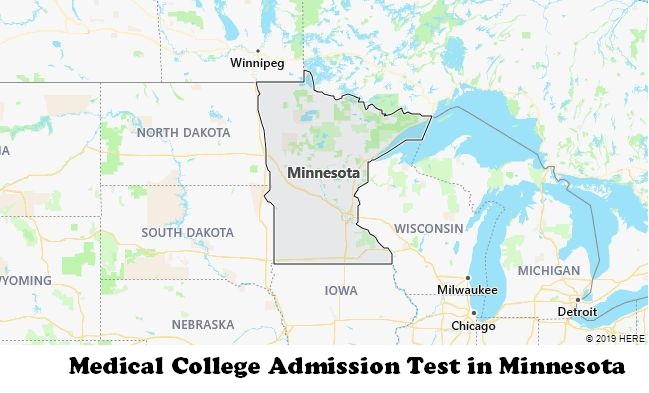According to AAMC (the MCAT test maker), there are 4 MCAT test centers in Minnesota. Most testing centers are located inside a college or university. You can select a testing location that is nearest to you. Please note that you are able to choose a test center when registering for the MCAT.

Minneapolis – Bloomington
Northland Center
3600 American Blvd West Suite 200A
Bloomington, MN 55431
Duluth – London Road
2200 London Road
Suite 202
DULUTH, MN 55812
Rochester – 2nd Street SW
2001 2ND STREET SW
MOGA BUILDING
ROCHESTER, MN 55902
PROMETRIC TEST CENTER
1811 WEIR DRIVE
SUITE 340
WOODBURY, MN 55125

Early History of Minnesota
Minnesota was part of the colony of New France, the Europeans were looking for the legendary Northwest Passage (a waterway from the Atlantic to the Pacific Ocean), traded with the Indians, built a few forts and trading posts.
As a result of the victory in the French and Indian War in the sixties of the XVIII century, control over the lands of Minnesota formally passed to Great Britain.
One of the first Americans to explore the lands of Minnesota was Jonathan Carver. A native of Massachusetts, he organized an expedition in 1766-67 that explored the Great Lakes region, the upper reaches of the Mississippi River (including Minnesota) and reached modern Iowa. Carver wrote a book about his travels, which became extremely popular (more than thirty reprints). A county is named after Jonathan Carver in present-day Minnesota.
After the American Revolution and the victory of the United States of America in the War of Independence, the lands of Minnesota east of the Mississippi became part of the US Northwest Territory. Most of the remainder of the state passed from France to the United States as a result of the Louisiana Purchase in 1803. Boundary disputes between the United States and British North America (which later became Canada) continued for several more decades, and the northern border of Minnesota was finally determined only in 1842.
In 1805, Zebulon Pike, an American officer and explorer, entered into an agreement to acquire land from the Indians at the confluence of the Minnesota and Mississippi rivers. This treaty, known as Pike’s Purchase, was approved in 1808 by the US Congress.
After the end of the war of 1812-15, the US government began the creation of several forts protecting the northwestern borders of the state. Among them was Fort Snelling, built in 1819-25 on land purchased by Zebulon Pike. Fort Snelling played a very important role in the development of Minnesota, it was around him that settlements grew up that became modern “twin cities”, Minneapolis and Saint Paul.
The Minnesota lands were part of the Illinois, Michigan, Wisconsin, and Iowa territories. In 1849, the Minnesota Territory was created. On May 11, 1858, Minnesota became the thirty-second state of the United States.
In 1855, the famous American poet Henry Longfellow wrote The Song of Hiawatha, an epic poem based on the legends of the Ojibwe people. The action of this classic American literature and translated into many languages, the poem takes place on the lands of Minnesota (although Longfellow himself was never here), so it is not surprising that many objects in this state are named after her heroes (for example, the Minnehaha Falls on the eponymous creek in Minneapolis).
During the American Civil War, there were no military operations in the state, however, infantry regiments were formed from Minnesota volunteers, who participated in hostilities on the side of the northerners and distinguished themselves, in particular, in the battle of Gettysburg.
In 1862, an Indian rebellion broke out in Minnesota, which became known as the Dakota War. Due to food shortages and delays in the payment of contractual sums of money by the US government, the Indians, led by the leader Little Crow, began to attack the American settlements, robbing and killing the residents. Killed up to four hundred white settlers, to suppress the uprising , US President Abraham Lincoln sent military units to Minnesota.
